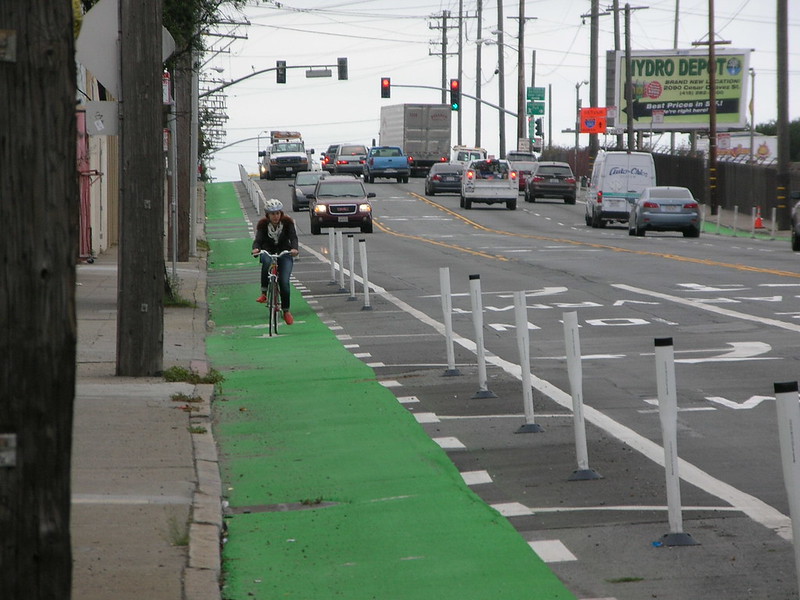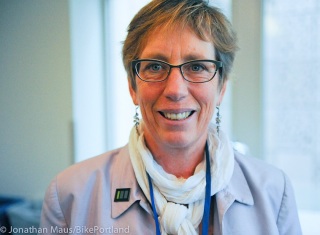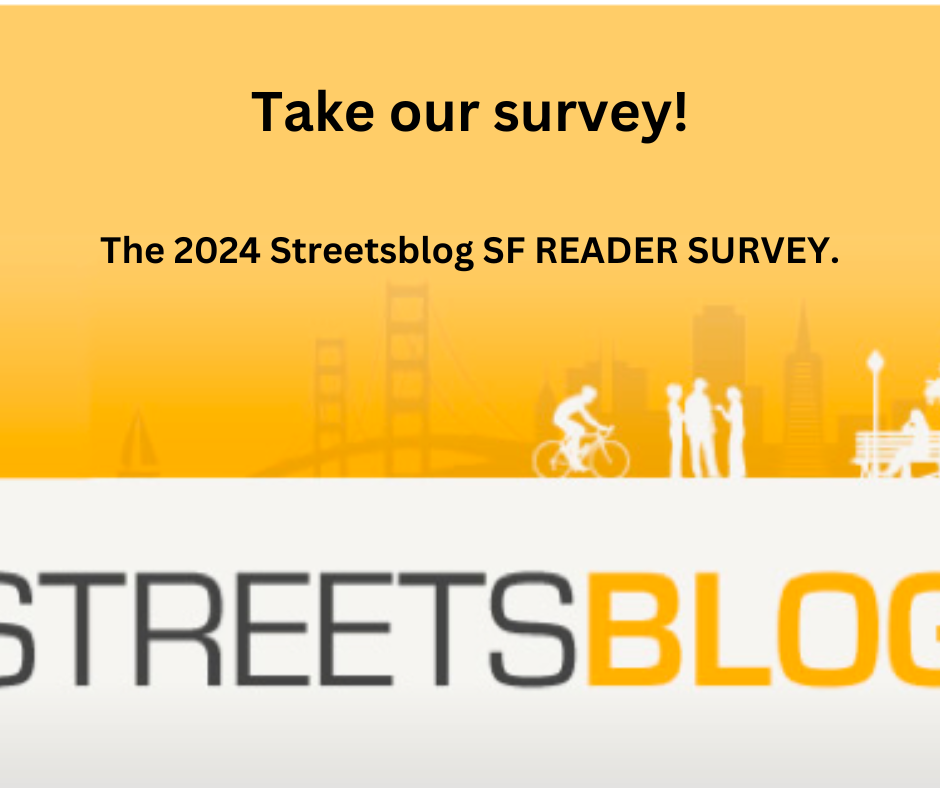How American Cities Are Making the Transition to Protected Bike Lanes
4:23 PM PST on February 8, 2013
Of all her trips pedaling around during her San Francisco visit, one of Martha Roskowski's most harrowing was the stretch between the SFMTA building at Market Street and Van Ness Avenue to a venue at Folsom and Second Streets, where she was slated to speak about making cities more bike-friendly. "It was my little moment of, 'Oh my god I'm late,' and 'I'm going to die,'" she said.
Downtown San Francisco is "still a pretty scary place to ride a bike," said Roskowski. "I mean, if you have local knowledge, and if you've got the map, and you know exactly where to cut through, you can navigate this city. But we really need to do better in our cities. We can do better."
Roskowski is the director of the Bikes Belong Foundation's Green Lane Project, an effort to facilitate partnerships between six American cities implementing protected bike lanes. The project's goal, she says, is to give these cities a boost by sharing best planning practices and research on the benefits of protected bike lanes. In short, the idea is to help "good" bicycling cities become "great," she said.
At a forum last night hosted by the SF Bicycle Coalition, Roskowski shared her thoughts on San Francisco's progress compared with the five other Green Lane cities: Austin, Memphis, Portland, Chicago, and Washington, D.C. Praising the SFMTA's recently-released Draft Bicycle Strategy, she noted San Francisco's grand vision, which is hampered by time-consuming planning processes and a lack of commitment to fund bicycling.
"I think of all of our cities, you guys have the potential to really change the course of this city," said Roskowski. "If you're willing to stand up and say, 'Yes we will do it.' It will take some money -- in the grand scheme of money, it is not astronomical amounts. If you look at the Bicycle Strategy, and you look at what the investment would take to get to the Amsterdam/Copenhagen level, it's a drop in the bucket of the 'great big spending' of the city. It's really a question of priorities, and we the people drive the priorities of our communities."
That sentiment was echoed by SFMTA board member Joél Ramos at the forum. During his study trip to Copenhagen last year, funded by Bikes Belong, Ramos described the striking sight of an elderly couple bicycling arm-in-arm in a protected bikeway on a major thoroughfare. "We can completely change the paradigm of the cycling experience with these cycle tracks," he said.
But with protected bike lanes in the United States virtually unheard of until the last few years, advocates and transportation planners have had very little homegrown research to convince policymakers and the public of the benefits of protected bike lanes -- from safer streets, to improved health, to more vibrant communities.
For SFBC Executive Director Leah Shahum, "It's been a whole different conversation than it was, say, five years ago, when you were trying to compare against something like Amsterdam, and it sounds so dreamy and far away."
"These designs are so new," said Roskowski, "we're just starting to get the data back. And there's a lot of hunger for the data because a lot of times, these conversations are fairly emotional when you start talking about changing how streets work."
"You can't change people's minds with data if they're coming from a really emotional place, but it helps shift the conversation sometimes to a different place," she added. "And it helps decision makers and people who are more data-driven to sort through the emotion and say, okay, well here's what we're hearing, but here's what the research is showing."
As cities like New York, Chicago, and SF create more bike-friendly streets, the data will also help officials and planners in other cities make the case for the kind of street designs that are still considered "experimental" by engineering bibles like the Manual on Uniform Traffic Control Devices. As part of that effort, the Green Lane project is helping to promote the Urban Bikeway Design Guide released in 2011 by the National Association of City Transportation Officials, which includes engineering standards for a greater variety of bikeway designs than the old-school manuals.
"It's just now that we're seeing the data come from places like New York and such," said Shahum. "So it's going to build from here, I think, to be able to say, not only does it look great, and feel great, but it's working: the numbers are showing the economic growth, the decrease in injuries and collisions, the increase in ridership."
In "a couple decades," she added, "we're going to see true health statistics going up. We're going to see a healthier population, and we're going to see a more mobile population."
Read More:
Stay in touch
Sign up for our free newsletter





